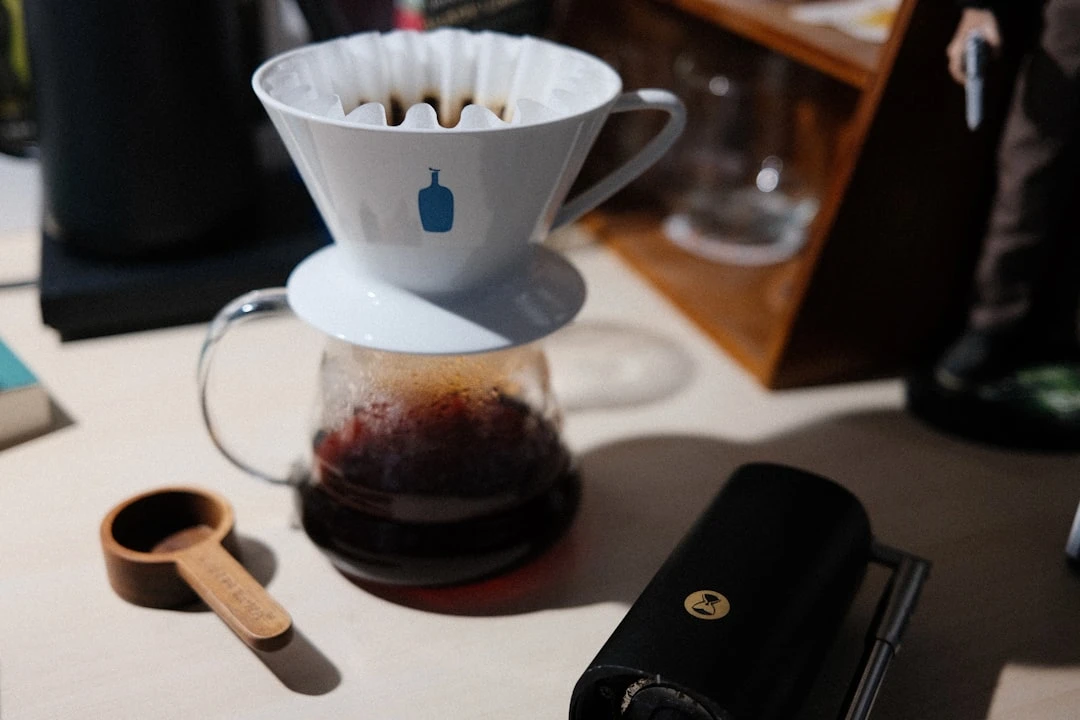How to Make Turkish Coffee: Traditional Recipe & Brewing Guide 2025

Did you know that Turkish coffee was so culturally significant it became a UNESCO World Heritage practice in 2013? This ancient brewing method, dating back to the 16th century, creates one of the world's most unique coffee experiences. Unlike your typical morning brew, Turkish coffee is unfiltered, intensely flavorful, and served with grounds still in the cup!
I'll admit, my first attempt at Turkish coffee was a disaster. The grounds were bitter, there was zero foam, and I basically created coffee-flavored sand. But once I learned the traditional techniques passed down through generations, everything changed. Now I can create that signature creamy foam and rich, aromatic coffee that makes Turkish coffee so special.
This isn't just about making coffee – it's about mastering an art form that brings people together. Whether you're curious about traditional brewing methods or want to impress guests with something completely different, I'll walk you through every step of authentic Turkish coffee preparation!
What Makes Turkish Coffee Different from Other Brewing Methods
The first time someone explained Turkish coffee to me, I thought they were joking. "You drink the grounds?" I asked, completely baffled. But here's the thing – Turkish coffee isn't just different, it's revolutionary in its simplicity and complexity at the same time.
Turkish coffee uses grounds that are powdered finer than anything you've ever seen. We're talking about consistency that makes espresso grind look chunky. This ultra-fine powder creates a completely different extraction process where the coffee particles remain suspended in the liquid, creating that signature thick, almost syrupy texture.
What really sets Turkish coffee apart is the brewing philosophy. While most coffee methods are about speed and efficiency, Turkish coffee demands patience and attention. You're literally cooking the coffee slowly, watching for visual cues, and timing everything by feel rather than a timer.
The unfiltered nature means every sip contains microscopic coffee particles that add body and intensity you simply can't get from filtered methods. It's like drinking liquid coffee essence. And don't even get me started on the foam – that creamy, persistent foam that sits on top isn't just for show, it's actually a sign of proper brewing technique.
I remember my Turkish friend Ayşe telling me that the foam is so important, traditionally, the eldest person at the table gets the cup with the most foam as a sign of respect. That's when I realized this isn't just a brewing method – it's a cultural practice with deep roots and meaning.
The serving ritual is equally unique. The coffee settles in the cup for a minute or two before drinking, allowing the finest particles to sink to the bottom. You sip slowly, savoring each mouthful, and you never drink the last few sips where the grounds have settled. It's mindful coffee drinking at its finest.
Essential Equipment for Making Turkish Coffee
When I first decided to make Turkish coffee seriously, I made the mistake of thinking I could use any old pot and regular coffee grounds. Boy, was I wrong! Turkish coffee demands specific equipment, and trying to shortcut this will leave you frustrated and caffeinated in all the wrong ways.
The cezve (pronounced "JEZ-vay") is absolutely essential. This small, long-handled pot is traditionally made from copper, though you can find decent stainless steel versions too. The shape isn't just traditional – it's functional. The narrow neck helps create the foam and concentrates the aroma, while the wide bottom allows for even heat distribution.
I started with a small copper cezve that holds about two servings, and honestly, it's perfect for learning. Don't go big right away – larger cezves are harder to control, and you'll be making a lot of practice batches before you get it right. Trust me on this one.
The coffee grinder situation is where most people get tripped up. Your regular burr grinder, even on its finest setting, won't cut it. Turkish coffee requires grounds that are literally powdered – think somewhere between flour and powdered sugar. I had to buy a specialized Turkish coffee grinder, and it was worth every penny.
If you're just starting out, you can ask a local Middle Eastern market to grind beans for you, or some specialty coffee shops can do it too. Just make sure you tell them it's for Turkish coffee – they'll know exactly what you mean.
Heat control is crucial, so gas stoves work best. Electric stoves can work, but you need to use the lowest possible setting and be extra patient. I've seen people use heat diffusers with some success on electric ranges, but gas gives you that precise control you really need.
For serving, you'll want small cups – think espresso cup size or even smaller. Traditional Turkish coffee cups are beautiful and functional, but any small cup will work. Just remember, you're serving small, concentrated portions, not American-sized coffee mugs!
Step-by-Step Turkish Coffee Recipe
Alright, here's where the magic happens. I'm gonna walk you through my foolproof method that took me way too many failed attempts to perfect. The key is understanding that Turkish coffee is all about ratios, timing, and reading the visual cues.
Start with cold water – this is crucial. Use about 3 ounces of water per serving (roughly one small coffee cup). Measure it directly in the cup you'll serve from, then pour it into your cezve. Cold water helps with foam development, and measuring this way ensures you get the right amount.
Add one heaping teaspoon of Turkish coffee grounds per serving. That's about 7-8 grams if you're being precise. Add sugar now if you want it – one teaspoon for medium sweetness, but you can adjust to taste. Some people like it unsweetened, which is totally fine too.
Here's the critical part that I screwed up for weeks: mix everything together while the cezve is still off the heat. Stir until the coffee is completely dissolved and the mixture looks uniform. No lumps, no dry spots. This step is essential for proper extraction and foam formation.
Now place the cezve on your lowest heat setting. This is where patience becomes your best friend. The mixture should heat slowly – we're talking 3-4 minutes before you see any action. You'll start to notice the coffee darkening and the mixture beginning to move slightly.
Watch for the foam to start forming around the edges. It'll look like tiny bubbles at first, then gradually build into a creamy foam that covers the surface. When the foam starts to rise toward the rim (but before it overflows!), remove the cezve from heat immediately.
Spoon a little foam into each serving cup first – this ensures everyone gets some of that precious foam. Then pour the coffee slowly, trying to preserve as much foam as possible. Let it settle for about a minute before serving. The grounds will sink to the bottom, and you'll have perfect Turkish coffee!
Pro Tips for Perfect Turkish Coffee Foam
The foam situation nearly drove me crazy when I first started making Turkish coffee. I'd watch YouTube videos of people creating these incredible, thick foam caps, then mine would come out flat as a pancake. After countless failed attempts and some helpful advice from Turkish coffee masters, I finally cracked the code.
Cold water is your secret weapon for foam development. Room temperature or warm water just doesn't create the same foam structure. I keep a bottle of filtered water in the fridge specifically for Turkish coffee – it makes that much difference.
The stirring technique before heating is more important than you might think. Mix thoroughly but gently, making sure every grain of coffee is moistened. I like to stir in one direction, creating a small whirlpool effect. This helps the coffee particles distribute evenly and sets up better foam formation.
Heat management is where most people mess up, and I was definitely one of them. Your instinct might be to speed things up, but resist! The slower you heat, the better your foam will be. I actually use a heat diffuser on my gas stove now because it gives me even more control.
Here's a trick I learned from a Turkish friend: when you see the first signs of foam forming, lift the cezve slightly off the heat for about 10 seconds, then put it back. This temperature fluctuation actually helps build more stable foam. It's like tempering the coffee.
Watch the foam color too – it should be a light caramel brown, not dark or burnt looking. If your foam is too dark, you're probably heating too fast or the coffee is over-extracted. Lighter foam usually indicates proper brewing temperature and timing.
Never stir once you start heating! This was my biggest mistake early on. Once that cezve hits the heat, your job is to watch and wait. Stirring breaks down the foam structure and ruins the brewing process. Just be patient and let the heat do its work.
If your foam keeps falling flat, try using slightly less water or slightly more coffee. Sometimes the ratio is just off by a tiny bit, and that affects foam stability. I keep notes on what works with different coffee brands because they can vary quite a bit.
Turkish Coffee Variations and Flavor Additions
Once you master the basic Turkish coffee technique, the fun really begins. Traditional variations have been developed over centuries, and each one brings something special to the table. I love experimenting with these different approaches, especially when I have guests who want to try something unique.
The sugar situation is actually pretty standardized in Turkish culture. "Sade" means no sugar, "az şekerli" is a little sugar (about half a teaspoon), "orta" is medium sweet (one teaspoon), and "şekerli" is sweet (one and a half teaspoons). I usually go with orta, but it's totally personal preference.
Cardamom is probably the most popular traditional addition, and for good reason. Just a tiny pinch of ground cardamom transforms the entire experience. The first time I tried cardamom Turkish coffee, I was blown away by how the spice complemented the coffee's intensity without overpowering it.
Cinnamon works beautifully too, but use it sparingly. A small pinch of ground cinnamon adds warmth and complexity. I've found that Ceylon cinnamon works better than regular cassia cinnamon – it's more delicate and doesn't overpower the coffee flavor.
Some regions add a tiny amount of ground cloves or even a few drops of rose water. I was skeptical about rose water at first, but when done right, it adds this subtle floral note that's absolutely magical. Just be careful – a little goes a very long way!
Different countries have their own variations too. Greek coffee is essentially the same method but often uses slightly different coffee-to-water ratios. Armenian coffee sometimes includes a small amount of sugar even in the "unsweetened" version. Lebanese coffee might include cardamom as standard.
For serving, Turkish delight is the traditional accompaniment, but I've found that any small, not-too-sweet treat works well. The idea is to have something to cleanse your palate between sips. Even a small piece of dark chocolate can be perfect.
I've experimented with modern twists too – a tiny drop of vanilla extract, a small pinch of cocoa powder, or even a microscopic amount of orange zest. These aren't traditional, but they can create interesting flavor profiles if you want to get creative.
Common Turkish Coffee Mistakes to Avoid
Oh boy, where do I even start with mistakes? I think I made every possible error when learning to make Turkish coffee. But hey, that's how you learn, right? Let me save you some frustration by sharing the most common pitfalls I see people fall into.
The biggest mistake is using coffee that's not ground fine enough. I cannot stress this enough – regular coffee grounds, even espresso grind, will not work. You need powder. I wasted so much coffee in the beginning trying to make do with what I had. Don't be like me – get the right grind or you're setting yourself up for failure.
Heating too fast is probably the second most common error. I get it – we're all used to fast coffee preparation. But Turkish coffee demands patience. If you rush the heating process, you'll get bitter, over-extracted coffee with no foam. Low and slow is the only way.
Over-stirring is another classic mistake. Once that cezve goes on the heat, put the spoon down and step away! I used to think I was helping by stirring, but I was actually destroying the foam formation and disrupting the brewing process. Your job is to watch, not to interfere.
Using the wrong water temperature is more subtle but equally important. Cold water is essential for proper foam development. Room temperature water just doesn't create the same foam structure, and hot water will throw off your entire timing.
Serving mistakes are common too. Don't pour too aggressively – you'll destroy the foam. Don't skip the settling time – the grounds need a minute to settle before drinking. And please, don't drink those last few sips with all the grounds. It's not pleasant, and it's not traditional.
Storage errors can ruin even perfect technique. Turkish coffee grounds go stale quickly because they're so fine. Buy small amounts, store in airtight containers, and use within a few weeks. I learned this the hard way when I bought a huge bag and wondered why my coffee kept getting worse.
Finally, wrong expectations can lead to disappointment. Turkish coffee isn't meant to be a quick caffeine fix – it's a slow, social experience. If you're rushing through it or expecting it to taste like your regular coffee, you're missing the point entirely.
Conclusion
Making authentic Turkish coffee isn't just about following a recipe – it's about embracing a centuries-old tradition that transforms simple ingredients into something magical. The key is patience, practice, and respecting the slow process that creates that incredible foam and rich flavor.
Remember, your first few attempts might not be perfect, and that's completely normal! Even experienced Turkish coffee makers had to learn through trial and error. Start with small batches, focus on controlling your heat, and don't rush the process. Each cup you make is a step toward mastering this beautiful brewing art.
The most important thing I've learned is that Turkish coffee is meant to be shared and savored. It's not about getting your caffeine fix quickly – it's about slowing down, enjoying the ritual, and connecting with a tradition that spans generations. Once you nail the technique, you'll have a unique skill that never fails to impress guests and gives you a completely different way to experience coffee.
Related Articles

Easy Espresso Tonic Recipe: Make This Trendy Iced Coffee Drink in 5 Minutes
Read More →
Espresso vs Americano: What’s the Difference and Which Should You Choose?
Read More →

